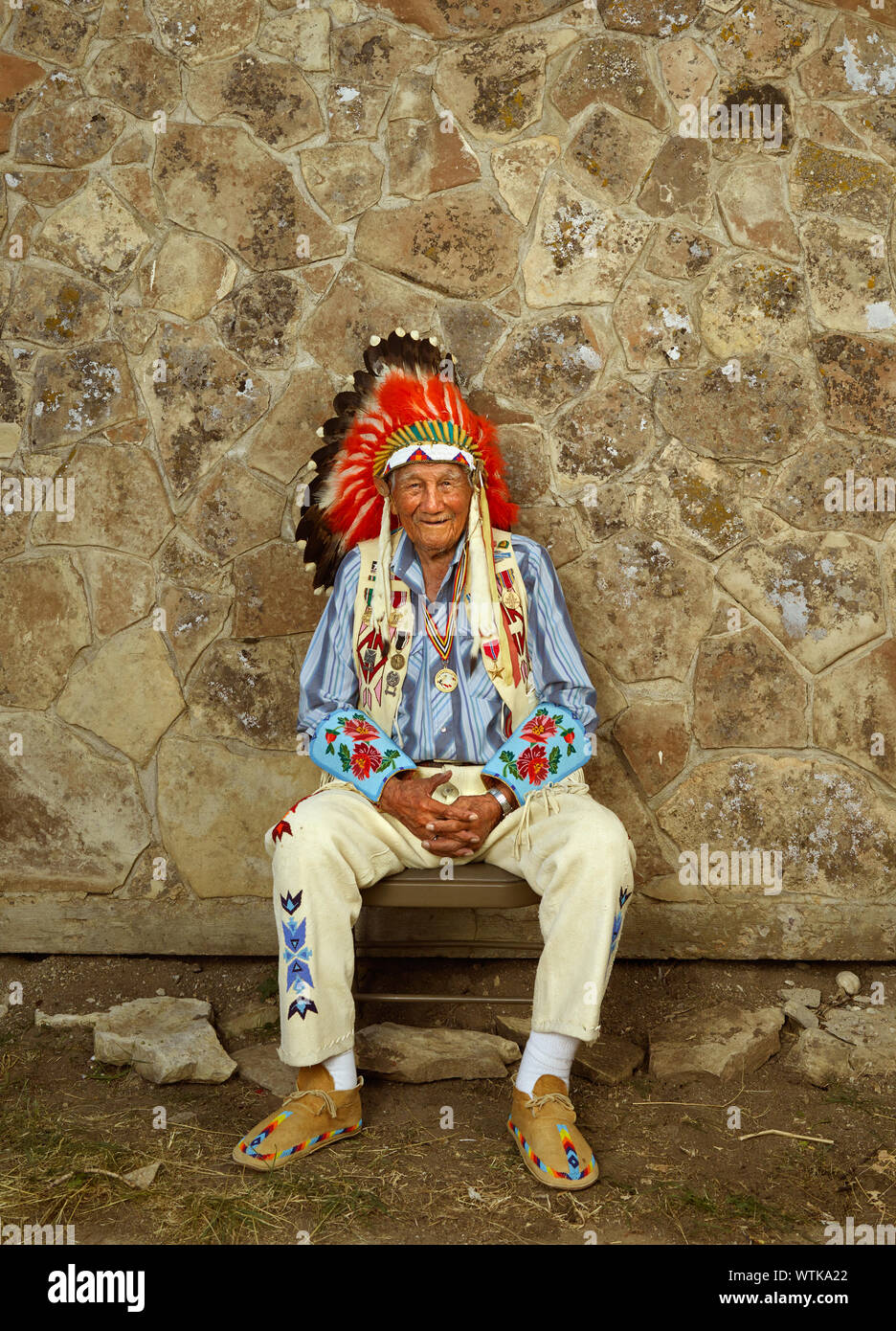

Their name comes from the Sioux word 'Shai-ena' meaning "Strange Speech People" for when they entered the Sioux lands nobody was able to understand their language. In 1832, the Cheyenne tribe separated into two groups, the Northern Cheyenne, who lived along the Platte River and the Southern Cheyenne, who lived along the Arkansas River in Colorado and Kansas. The Cheyenne tribe changed their lifestyle to become nomadic buffalo hunters who lived in tepees. The were forced west to the Great Plains by the French and their Chippewa allies. The Cheyenne tribe originally lived as farmers in earthlodges in the Sheyenne River valley. The names of the most famous chiefs of the Cheyenne tribe included Dull Knife, Chief Roman Nose, Little Rock, Morning Star and Black Kettle. The Cheyenne tribe were a powerful, resourceful tribe of the Great Plains who fiercely resisted the white encroachment of the Native Indian lands. To discover more about the Cherokee, click this link. The rest of the people under Chief John Ross remained and were taken to stockades in North Carolina, until they left for Indian Territory and arrived in June 1839.

About 2,000 followers under John Ridge and Major Ridge and two nephews, Elias Boudinot and Stand Waite, departed before that date, joining the Western Cherokee in Indian Territory.
WAS THE SHOSHONE TRIBE WARLIKE OR PEACEFUL FULL
The Cherokees would be given an equal amount of land in Indian Territory to what they were giving up east of the Mississippi River, and given full compensation for all the property left in exchange for all the Cherokee land east of the Mississippi. would pay the Cherokee people $5 million to be disbursed on per capita basis, with an additional $500,000 given for educational funding. One authority has suggested the term was probably applied to the Cherokee from the language of a Muskogean tribe to signify “people of a different speech.” For more information about the Apache Tribe of Oklahoma, click here.Ĭherokee is the approved anglicized form of the name rendered T’salagi in the Cherokee language, a name found spelled nearly 50 different ways in historical records. The tribal complex is located in Anadarko. The Apache Tribe of Oklahoma is federally recognized and has had a formal governmental structure, embodied in a business committee, since 1966. The historic Apache presence in Oklahoma has continued into the twenty-first century. Income came mainly from leasing their land and raising livestock. After the demise of the Kiowa-Comanche-Apache Reservation many Apaches remained in the former reservation area, concentrating in locations around Cache Creek and the Washita River. Their confinement to reservation lands in western Oklahoma from 1867 until the time of allotment in 1901. It would be the last battle in which the natives repelled the US Army in the southern plains and marked the beginning of a decade long downfall for the southern plains tribes. Some groups of Plains Apache refused to settle on reservations and were involved in Kiowa and Comanche uprisings, most notably the First Battle of Adobe Walls which was one of the largest engagements fought on the Great Plains. Sill reservation to house 1,598 Comanche, 1,140 Kiowa and 326 Kiowa Apache.
WAS THE SHOSHONE TRIBE WARLIKE OR PEACEFUL FREE
The transition from the free life to restricted life on the reservation was difficult for many families. The reservation period lasted from 1868 to 1906. They were forced to move south of the Washita River to the Red River and Western Oklahoma with the Comanche and the Kiowa. By the Treaty of Medicine Lodge in 1867 both groups had settled in Western Oklahoma and Kansas. The Plains Apache (Kiowa Apache) and Kiowa migrated into the southern plains sometime in the early 19th century. Many of the Plains Apache did not learn the Kiowa language, preferring to communicate with their allies using the Plains Indian Sign Language, (it is thought this system was devised by the Kiowa).Įven before contact with Europeans, their numbers were never large, and in 1780 their population was estimated at 400. Because of this arrangement, this group of Apache was sometimes known as the Kiowa Apache.

The Plains Apache entered this alliance for mutual protection against hostile tribes. They were a band within the Kiowa nation but differentiated by language and ethnicity. In the early 18th century, the Plains Apache were living in the area of the upper Missouri River.


 0 kommentar(er)
0 kommentar(er)
